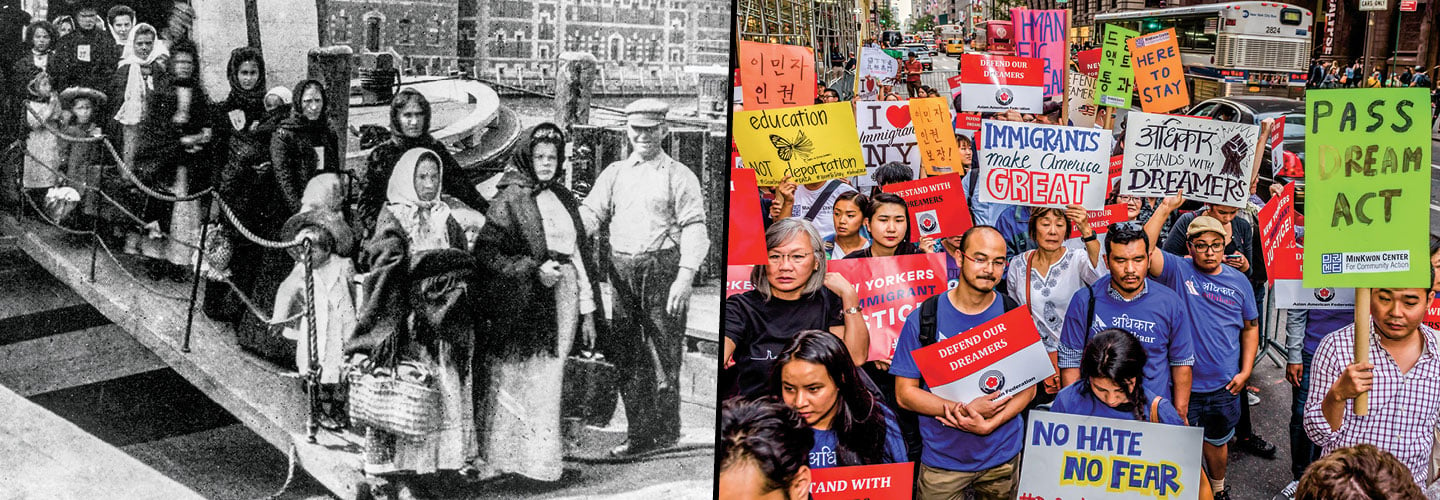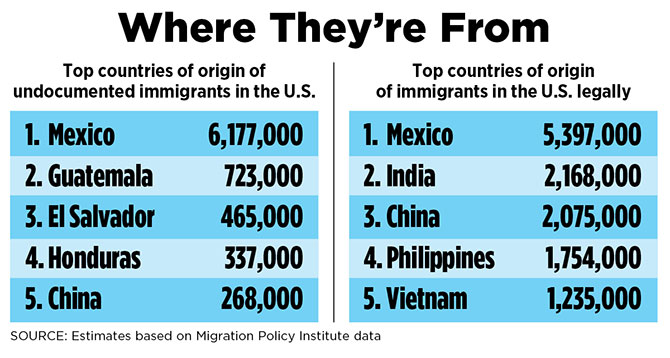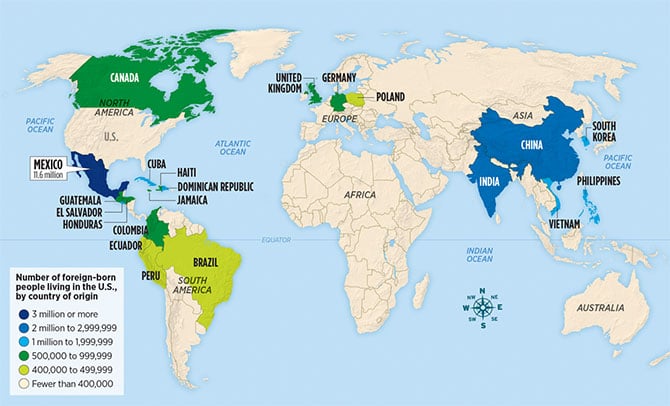But others see robust immigration as critical to the nation’s well-being. After all, some of the most innovative high-tech companies, such as Google and eBay, were founded by immigrants, they note.
“The identity of the United States is a nation of immigrants,” says Kraut, the historian. “[They] have made an enormous contribution. Their talents have helped make us the preeminent society in the world in terms of higher education and advanced research.”
Some scholars see recent calls to restrict immigration as evidence of anxiety about the country’s changing demographics.
The Pew Research Center projects that foreign-born Americans will exceed 15 percent of the population by 2025, breaking the record of 14.8 percent set in 1890. And by 2055, white people will make up less than half of the nation’s population.
“The immigration debate is bound up with fears about America becoming a majority-minority country,” says Gary Gerstle, a professor of American history at Cambridge University in England.
But Gerstle thinks Americans will eventually put aside their fears, as they did with previous generations of immigrants.
“These moments of transition in America’s perception of itself are very trying times,” he says. “But ultimately the new America wins, and the new America turns out to be something the old Americans can live with.”

















